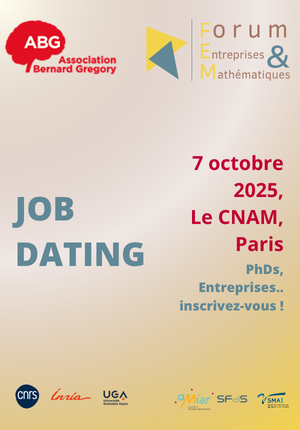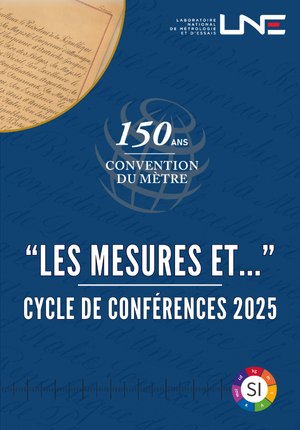Microscopie non linéaire pour étudier la biomécaniques des tissus conjonctifs // Nonlinear optical microscopy to probe connective tissues' biomechanics
| ABG-131755 | Thesis topic | |
| 2025-05-07 | Public funding alone (i.e. government, region, European, international organization research grant) |
- Physics
Topic description
Position du projet - Les propriétés mécaniques des systèmes biologiques jouent un rôle complexe dans la détermination de leurs fonctions physiologiques et sont impliquées dans de nombreuses pathologies. A noter que des tissus aux propriétés aussi différentes que l'os, la peau ou le tendon sont formés des mêmes constituants, notamment le collagène fibrillaire. Ainsi, leurs propriétés mécaniques spécifiques résultent de leur organisation sub-microscopique. Aujourd'hui, la compréhension de la relation structure/fonction dans les tissus conjonctifs se heurte au défi de sonder les multiples échelles impliquées dans la construction de propriétés macroscopiques à partir de structures individuelles dans des échantillons très complexes.
L'avènement de la microscopie multiphoton, basée sur l'interaction non-linéaire entre des impulsions laser et l’échantillon, a révolutionné notre façon d’observer le vivant. En particulier, l’imagerie par génération du second harmonique (SHG) est aujourd'hui la référence pour visualiser la distribution du collagène dans des échantillons épais [1]. Parallèlement, la microscopie Brillouin s'est récemment imposée pour cartographier les propriétés viscoélastiques dans des milieux mous et hétérogènes [2].
Objectifs - Dans ce contexte, ce projet vise à corréler imagerie Brillouin et microscopie SHG interférométrique et polarimétrique dans le but de quantifier l'architecture du collagène et les propriétés viscoélastiques dans le cartilage articulaire. En particulier, des études antérieures du groupe de François Légaré ont montré des domaines de polarité fibrillaire constante en périphérie des chondrocytes [3]. En utilisant la microscopie Brillouin, nous étudierons le rôle de ces domaines dans la détermination de la réponse mécanique locale. Ce projet permettra de mieux comprendre la relation morpho-fonctionnelle complexe des tissus conjonctifs et d'analyser leur comportement physiopathologique.
----------------------------------------------------------------------------------------------------------------------------------------------------------
Position of the project - The mechanical properties of biological systems play a complex role in determining the physiological functions of tissues and appear to be dominant factors in many diseases progression. Interestingly, tissues with properties as different as bone, skin or tendon are mainly composed of the same elementary units, primarily fibrillar collagen. Hence, their specific mechanical properties are directly linked to their sub-microscopic organisation. Nowadays, understanding the structure/function relation in connective tissues faces the challenge of probing the multiple scales involved in constructing macroscopic properties from individual structures in highly complex samples.
The advent of multiphoton microscopy, based on the nonlinear interaction between laser pulses and biological samples, has revolutionised the way we observe living organisms. Notably, Second Harmonic Generation (SHG) microscopy is now considered as the gold standard to visualize collagen distribution in thick samples [1]. In parallel, Brillouin microscopy has recently emerged as a new paradigm to map viscoelastic properties with micrometer resolution in soft and heterogeneous medium [2].
Objectives - In this context, the rational of the project is to combined Brillouin imaging with interferometric and polarimetric SHG. Together with advanced image analysis, this will enable to quantify collagen architecture and viscoelastic properties at sub-micron scale in articular cartilage. Notably, previous studies from Légaré’s group have shown micron-scale domains of constant fibrillar polarity in the vicinity of chondrocytes [3]. Using Brillouin microscopy, we will investigate the role of these domains in determining local mechanical response. This project will provide new insights into the complex morpho-functional relationship in connective tissues as well as a framework to analyse their patho-physiological behaviour.
[1] A Aghigh et al. Second harmonic generation microscopy: a powerful tool for bio-imaging. Biophysical Reviews, 15(1), 43-70 (2023).
[2] R Prevedel, R., et al. Brillouin microscopy: an emerging tool for mechanobiology. Nature methods, 16(10), 969-77 (2019).
[3] C-A Couture, et al. The impact of collagen fibril polarity on second harmonic generation microscopy. Biophysical journal, 109(12), 2501-10 (2015).
Funding category
Funding further details
Presentation of host institution and host laboratory
Dans le cadre d'une collaboration internationale, ce projet sera mené à mi-temps à l'INRS (Université du Québec, Varennes) pour l'interférométrie SHG, et à mi-temps au LP2N (Institut d'Optique, Bordeaux) pour la microscopie Brillouin, les deux équipes travaillant à la croisée des nanosciences, de l'optique et de la bio-imagerie. Le professeur Brown (Queensland University of Technology, Brisbane) sera également impliqué pour guider l'interprétation des propriétés mécaniques microscopiques.
----------------------------------------------------------------------------------------------------------------------------------------------------------
As part of an international collaborative effort, this project will be carried on half time at the INRS (University of Quebec, Laval) to perform interferometric SHG, and half time at the LP2N (Institute of Optics, Bordeaux) for Brillouin microscopy, both teams working at the crossroad between nanoscience, optics and bio-imaging. Additionally, Prof. Cameron Brown (Queensland University of Technology, Brisbane) will be involved to guide the interpretation of the microscopic of mechanical properties.
PhD title
Country where you obtained your PhD
Institution awarding doctoral degree
Graduate school
Double degree
YesCountry where the PhD was obtained in cotutelle
Establishment awarding the doctorate in cotutelle
Candidate's profile
Ce projet est principalement expérimental et implique des activités en microscopie (alignement optique, acquisition), analyse d’images (ImageJ /Python/ Matlab) et préparation de tissus. Nous cherchons un candidat ayant une formation en optique/biophysique et motivés pour travailler dans un environnement interdisciplinaire.
----------------------------------------------------------------------------------------------------------------------------------------------------------
This project is primarily experimental and involves aspects of nonlinear microscopy (optical alignment, image acquisition), data analysis (ImageJ /Python/ Matlab) and basic tissue preparation. We are seeking for candidates with a background in optics/biophysics and motivated to work in an interdisciplinary environment. Experience in microscopy, nonlinear optics and image/signal processing will be an asset.
Vous avez déjà un compte ?
Nouvel utilisateur ?
Get ABG’s monthly newsletters including news, job offers, grants & fellowships and a selection of relevant events…
Discover our members
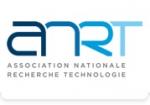 ANRT
ANRT  TotalEnergies
TotalEnergies  ONERA - The French Aerospace Lab
ONERA - The French Aerospace Lab 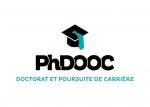 PhDOOC
PhDOOC  SUEZ
SUEZ  MabDesign
MabDesign  MabDesign
MabDesign  ASNR - Autorité de sûreté nucléaire et de radioprotection - Siège
ASNR - Autorité de sûreté nucléaire et de radioprotection - Siège  Ifremer
Ifremer  Groupe AFNOR - Association française de normalisation
Groupe AFNOR - Association française de normalisation 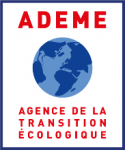 ADEME
ADEME  CASDEN
CASDEN  Institut Sup'biotech de Paris
Institut Sup'biotech de Paris  Aérocentre, Pôle d'excellence régional
Aérocentre, Pôle d'excellence régional  Généthon
Généthon  CESI
CESI  Laboratoire National de Métrologie et d'Essais - LNE
Laboratoire National de Métrologie et d'Essais - LNE  Nokia Bell Labs France
Nokia Bell Labs France  Tecknowmetrix
Tecknowmetrix
-
JobRef. 121187, Occitanie , France
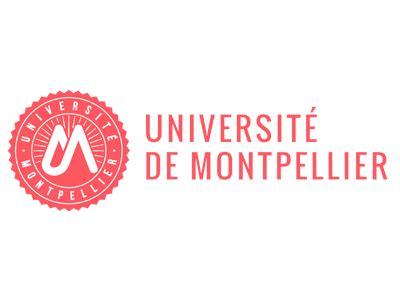 Université de Montpellier
Université de MontpellierIngénieur de recherche en biologie
Scientific expertises :Biology - Biochemistry - Biotechnology
Experience level :Confirmed
-
Thesis topicRef. 131449Sophia-Antipolis , Ile-de-France , France
 Mines Paris - PSL, Centre PERSEE & RTE
Mines Paris - PSL, Centre PERSEE & RTEPhD CIFRE RTE - MINES PARIS: Artificial Intelligence for Renewable Energy Forecasting
Scientific expertises :Engineering sciences - Energy - Mathematics

